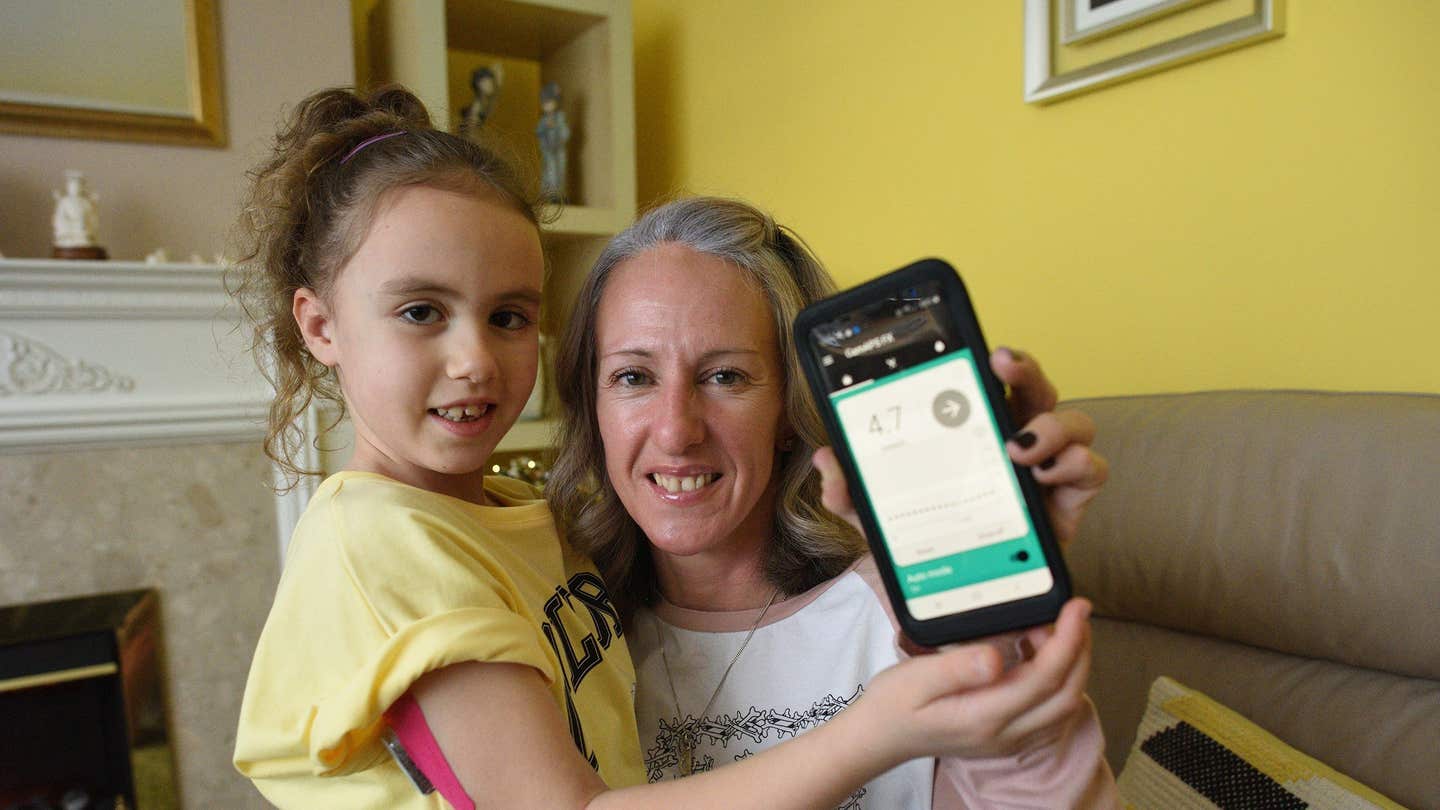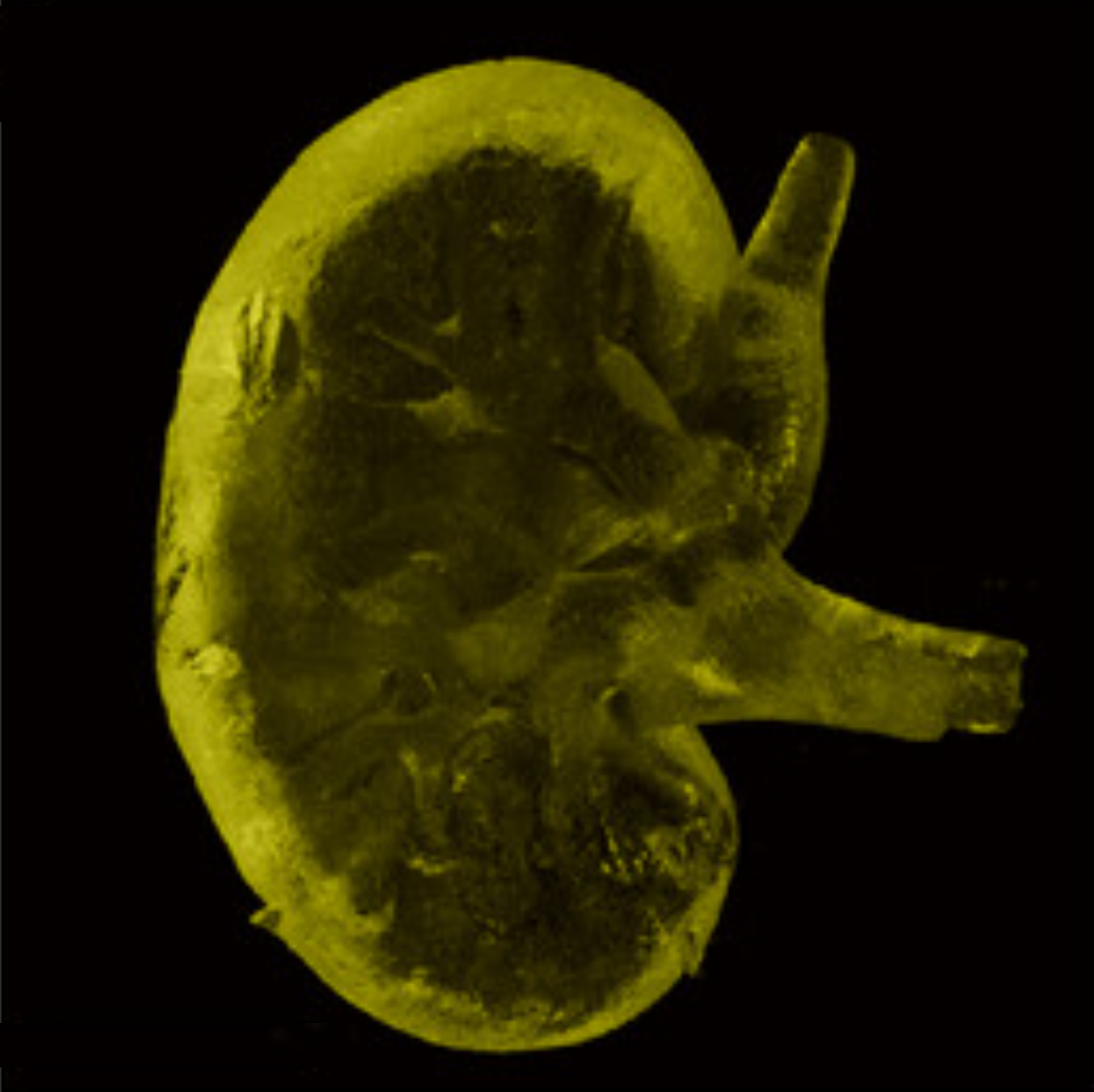Lifechanging Artificial Pancreas Offers New Hope for Children with Type 1 Diabetes
Results are nothing short of remarkable, revealing the artificial pancreas’ safety and superior effectiveness in managing blood sugar levels

[Nov. 20, 2023: JD Shavit, The Brighter Side of News]
Sofia Wright (with mother Sam) showing the artificial pancreas app (CREDIT: Phil Mynott)
Researchers at the University of Cambridge have developed a groundbreaking artificial pancreas that is proving to be a game-changer in the management of type 1 diabetes in very young children.
Published in the New England Journal of Medicine, their study compared the performance of the innovative artificial pancreas, which utilizes an advanced algorithm to regulate insulin delivery through a wearable device, against the conventional 'sensor-augmented pump therapy.' The results are nothing short of remarkable, revealing the artificial pancreas's safety and superior effectiveness in managing blood sugar levels in these vulnerable young patients.
A Complex Challenge for Young Children with Type 1 Diabetes
Managing type 1 diabetes in very young children is an intricate and demanding task, fraught with challenges stemming from various factors. These factors include the highly variable insulin requirements, varying responses to treatment among individual children, and unpredictable eating and activity patterns. Moreover, young children with diabetes are at increased risk of experiencing dangerously low blood sugar levels (hypoglycemia) and high blood sugar levels (hyperglycemia), which can have long-lasting consequences on their health and development. Previous studies have linked prolonged hyperglycemia in children with type 1 diabetes to lower IQ scores and slower brain growth.
To address these challenges, healthcare professionals have increasingly turned to devices that continuously monitor glucose levels and administer insulin through a pump, which delivers insulin via a cannula inserted into the skin. While these devices have demonstrated some success in older children, they have not been as effective in very young children.
The Breakthrough: CamAPS FX
Professor Roman Hovorka, from the Wellcome-MRC Institute of Metabolic Science at the University of Cambridge, has developed a groundbreaking solution named CamAPS FX. This innovation combines a mobile app, a glucose monitor, and an insulin pump, effectively creating an artificial pancreas that automatically adjusts insulin delivery based on predicted or real-time glucose levels.
Termed a 'hybrid closed-loop system,' it requires caregivers to administer insulin during mealtimes, while the algorithm autonomously manages insulin levels at all other times. Notably, fully closed-loop systems are not commercially available yet.
Related Stories
Professor Hovorka elaborated on the technology, stating, "CamAPS FX makes predictions about what it thinks is likely to happen next based on past experience. It learns how much insulin the child needs per day and how this changes at different times of the day. It then uses this to adjust insulin levels to help achieve ideal blood sugar levels. Other than at mealtimes, it is fully automated, so parents do not need to continually monitor their child’s blood sugar levels."
To assess the safety and effectiveness of the CamAPS FX system, Professor Hovorka and an international team of researchers conducted a comprehensive clinical trial across seven centers in the UK and Europe. They enrolled 74 young children with type 1 diabetes, aged between one and seven years, to participate in the study. The trial aimed to compare the outcomes of hybrid closed-loop therapy using CamAPS FX with those of sensor-augmented pump therapy. All participants used the CamAPS FX system for 16 weeks and then switched to the control treatment, sensor-augmented pump therapy, for another 16 weeks.
Remarkable Improvements in Glucose Control
The results of the trial were nothing short of remarkable. On average, children using CamAPS FX spent approximately 71.6% of their day within the target range for glucose levels, which is nearly nine percentage points higher compared to the control period. This translated to an additional 125 minutes per day spent in the desired glucose range.
Artificial pancreas app, insulin pump and glucose monitor. (CREDIT: DexCom)
Furthermore, while using CamAPS FX, these young patients spent only 22.9% of their time with elevated blood sugar levels (hyperglycemia), which is almost nine percentage points lower than during the control period. Importantly, there was no significant difference between the two groups in the time spent in hypoglycemia (low blood sugar).
CamAPS FX also made significant improvements in average blood sugar levels, measured through glycated hemoglobin (HbA1c) levels. HbA1c is a marker that provides insight into a person's average blood sugar levels over a period of weeks or months. For individuals with diabetes, higher HbA1c levels increase the risk of developing diabetes-related complications.
Shown are the median sensor glucose levels during closed-loop insulin delivery (red line; data from 73 participants) and sensor-augmented pump therapy (black line; data from 74 participants). The red dotted lines (closed-loop insulin delivery) and the gray shaded area (sensor-augmented pump therapy) indicate interquartile ranges. Dashed horizontal lines indicate the target glucose range of 70 to 180 mg per deciliter (3.9 to 10.0 mmol per liter). To convert values for glucose to millimoles per liter, multiply by 0.05551. (CREDIT: New England Journal of Medicine)
At the beginning of the study, the participants had an average HbA1c level of 7.3%, but the use of the CamAPS FX system reduced this by 0.7 percentage points. This is a noteworthy achievement, particularly considering that the study participants already had relatively good glycemic control at the outset, making it challenging to further improve glucose control without increasing the risk of hypoglycemia.
Dr. Julia Ware, the first author of the study, also affiliated with the Wellcome-MRC Institute of Metabolic Science, emphasized the significance of these findings. "Very young children are extremely vulnerable to changes in their blood sugar levels. High levels in particular can have potentially lasting consequences to their brain development. On top of that, diabetes is very challenging to manage in this age group, creating a huge burden for families," she noted. "CamAPS FX led to improvements in several measures, including hyperglycemia and average blood sugar levels, without increasing the risk of hypos. This is likely to have important benefits for those children who use it."
The Control-IQ artificial pancreas system from DexCom. (CREDIT: Tandem Diabetes Care)
One of the most significant challenges reported by families of young children with type 1 diabetes is poor sleep quality. Variability in insulin requirements and parental concerns about hypoglycemia pose the greatest challenges overnight. In the study, researchers discovered that over 80% of overnight sensor readings while using the CamAPS FX system fell within the target glucose range, demonstrating that hybrid closed-loop therapy effectively addresses nighttime concerns more than sensor-augmented pump therapy.
Dr. Ware added, "Parents have described our artificial pancreas as 'life-changing' as it meant they were able to relax and spend less time worrying about their child's blood sugar levels, particularly at night time. They tell us it gives them more time to do what any 'normal' family can do, to play and do fun things with their children."
CamAPS FX is already making a positive impact on the lives of young children with type 1 diabetes and their families. It is currently available through several NHS trusts across the UK, including Cambridge University Hospitals NHS Foundation Trust. The research team is optimistic that this innovative technology will become even more widely accessible in the near future.
In closing, Professor Hovorka expressed his gratitude and optimism, saying, "From the first clinical trials of our algorithms to today's findings has taken well over a decade, but the dedication of my team and the support of all the children and families who have taken part in our studies has paid off. We believe our artificial pancreas will transform the lives of families with very young children affected by type 1 diabetes."
CamAPS FX has already demonstrated its effectiveness in older children and adolescents with type 1 diabetes, and this study marks the first time it has been proven to be effective over several months in very young children. As research and innovation continue to progress, the future holds hope for a brighter and healthier life for these young patients and their families.
Note: Materials provided above by The Brighter Side of News. Content may be edited for style and length.
Like these kind of feel good stories? Get the Brighter Side of News' newsletter.



